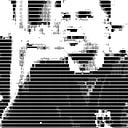The Theory of Affordances
The properties of an object that allow it to function.
Affordances were first observed by psychologist James J. Gibson and written about in his 1977 article The Theory of Affordances. It was there that he established the idea that affordances were the properties of an object that allow it to function.
Physical clues of an object act as indicators of a desired action. Such as a rigid bottle cap allows for twisting, a hinged door allows for pushing or pulling, and a staircase allows for ascending or descending. Further expanding upon his work, in 1979 Gibson wrote an in depth analysis on affordances in his book The Ecological Approach to Visual Perception.
It was not until the late 80’s when researcher Don Norman coined the phrase “perceived affordances” and began applying these principles to the field of human-computer interaction (HCI). Norman defined perceived affordances by stating that users perceive actions to be possible based on the design, distinct from actions that are actually possible. Meaning the user assumes an action can be made outside of the actions that are being presented to them.
In design we use visual cues to suggest affordances. The ridges on a bottle cap help to provide a grippable surface, flat plates on a door at hand height suggest that the door can be pushed, and so on. When designing a system or an interface we can use visual cues to suggest to the user that he/she can carry out an action. For example in Google’s Material Design the large circle with a plus sign in the middle of it suggests to the user that they can add something like a new event for the day, a new contact, or even a new message.
Affordances can also be deliberately restricted. By doing so we can direct the user to take the correct course of action or achieve a desired set of results.
When designing, actual and perceived affordances must be considered. Desired actions cannot be accomplished if an object does not afford it. And afforded actions will not be carried out if the user does not perceive them.
There has been quite a large misunderstanding or misinterpretation between the two definitions of affordances created by Gibson and Norman. In 1991 William Gaver created a framework for separating affordances from the perceptual information available.
In his framework Graver suggests that false affordances exist when action is not possible but the suggestion of action is visible. Such as a cardboard chair. It looks sturdy and is associated with sitting. But the material in which it was designed may not support actual sitting. Graver also distinguishes that when no action and no perception of action is present then this is known as correct rejection. He even goes as far as explaining hidden affordances, actions that can be taken but no visual clues suggesting the action. Example, a hidden door.
By clearly defining both Norman and Gibson’s definitions of the word affordance we can distinguish between the utility, usefulness, and usability of an object, product, or service. As a user experience designer we design for usefulness by creating affordances that match user goals. And we also design for usability by presenting information that specifies those affordances.
References:
5. Affordances
https://www.interaction-design.org/literature/book/the-glossary-of-human-computer-interaction/affordances
Affordance
https://en.wikipedia.org/wiki/Affordance
Susan Weinschenk
100 Things Every Designer Needs to Know About People
